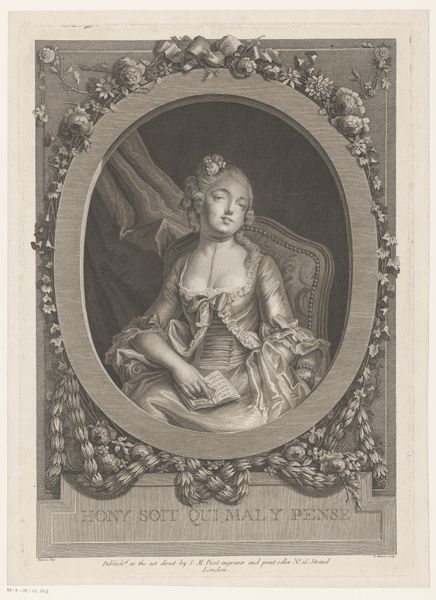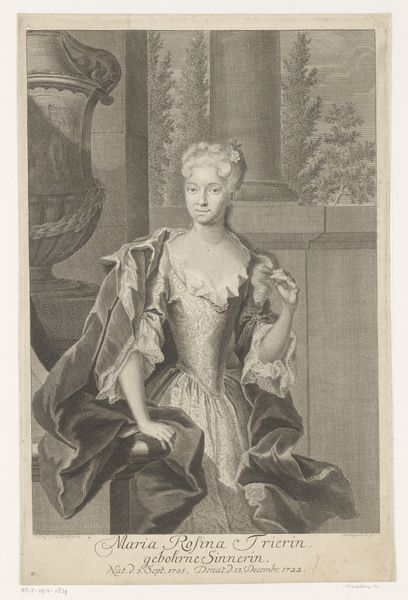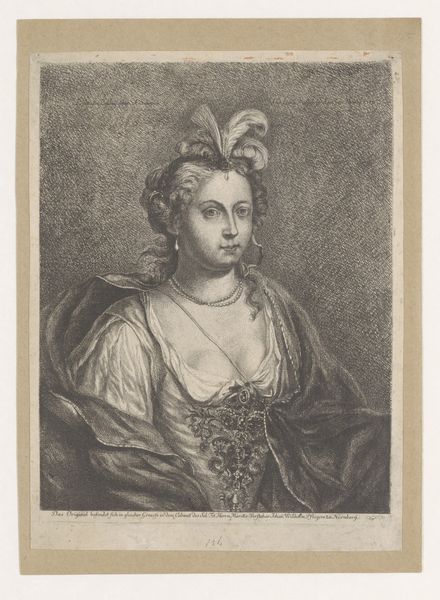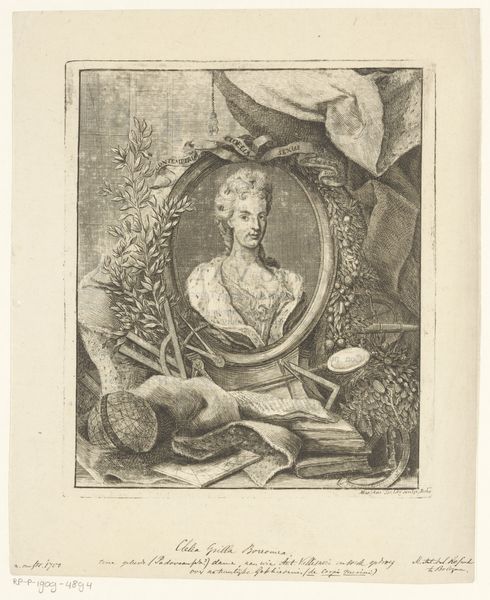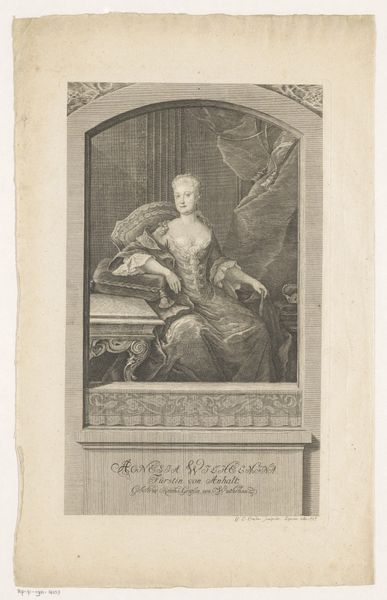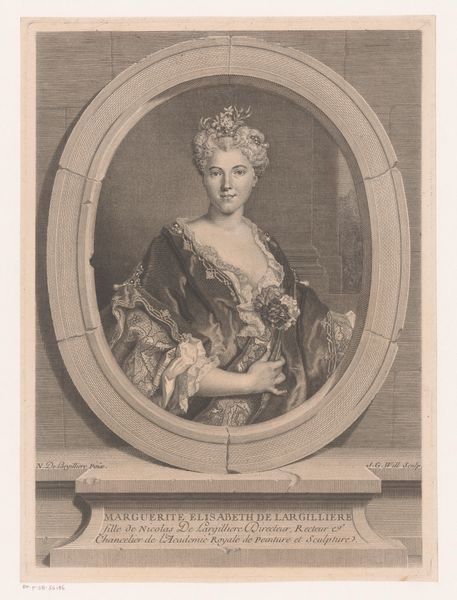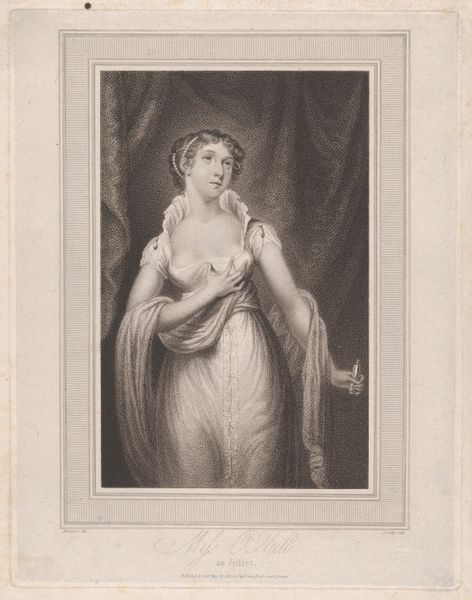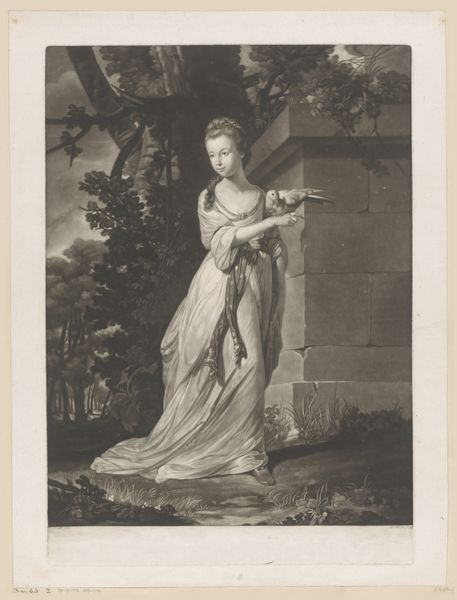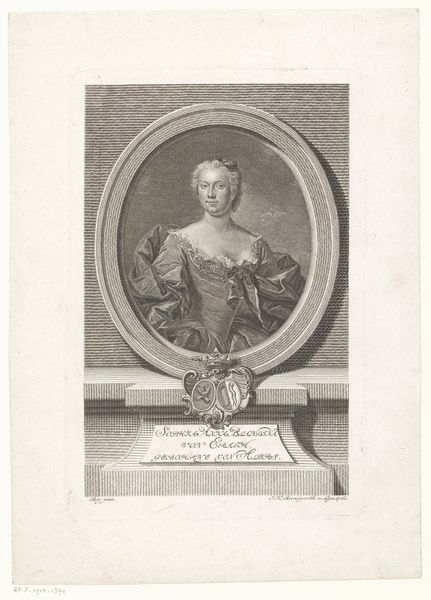
print, engraving
#
portrait
#
baroque
# print
#
coloured pencil
#
genre-painting
#
engraving
Dimensions: height 232 mm, width 180 mm
Copyright: Rijks Museum: Open Domain
Curator: This engraving by Gabriel Spitzel from around 1720, titled "Woman with a Letter Stating She is Cheating on Her Husband," immediately places us within a specific societal context. What strikes you most about it? Editor: Well, first off, the blue tone gives it an unusual and somber mood. She's holding the letter so delicately, and it seems like a pretty scandalous revelation! How do you interpret this work in the context of its time? Curator: The Baroque era, while opulent, also wrestled with moral complexities and shifting power dynamics. Spitzel’s print is not just about adultery; it’s a commentary on the constraints placed upon women and perhaps their limited agency within marriage. Note how her gaze averts ours; do you think that communicates complicity or defiance? Editor: Hmm, defiance perhaps? Or maybe just discomfort. It makes me wonder if this was meant as a moral lesson or something a bit more sympathetic to the woman. Curator: That's the crucial question. Is Spitzel condemning or critiquing? Consider the burgeoning literacy among women of the period, opening new channels of communication and, potentially, subversion. Also, how does her attire signal her social standing, and how might that intersect with our reading of her actions? Editor: Her dress definitely indicates wealth, so this wasn’t just about basic survival. Maybe it hints at a lack of emotional fulfillment within her marriage leading her to seek something else. Curator: Precisely. It highlights the multifaceted realities of women's lives, beyond the simplistic morality tales often told. So, how does reframing the work in terms of female agency and social commentary shift your initial understanding? Editor: It becomes more complex and nuanced, I guess! I came in thinking it was just about cheating, but now I see layers of social commentary about women’s roles. Curator: Exactly, seeing art as a reflection of broader cultural and power struggles, we begin to ask much bigger, more meaningful questions about what it communicates.
Comments
No comments
Be the first to comment and join the conversation on the ultimate creative platform.
